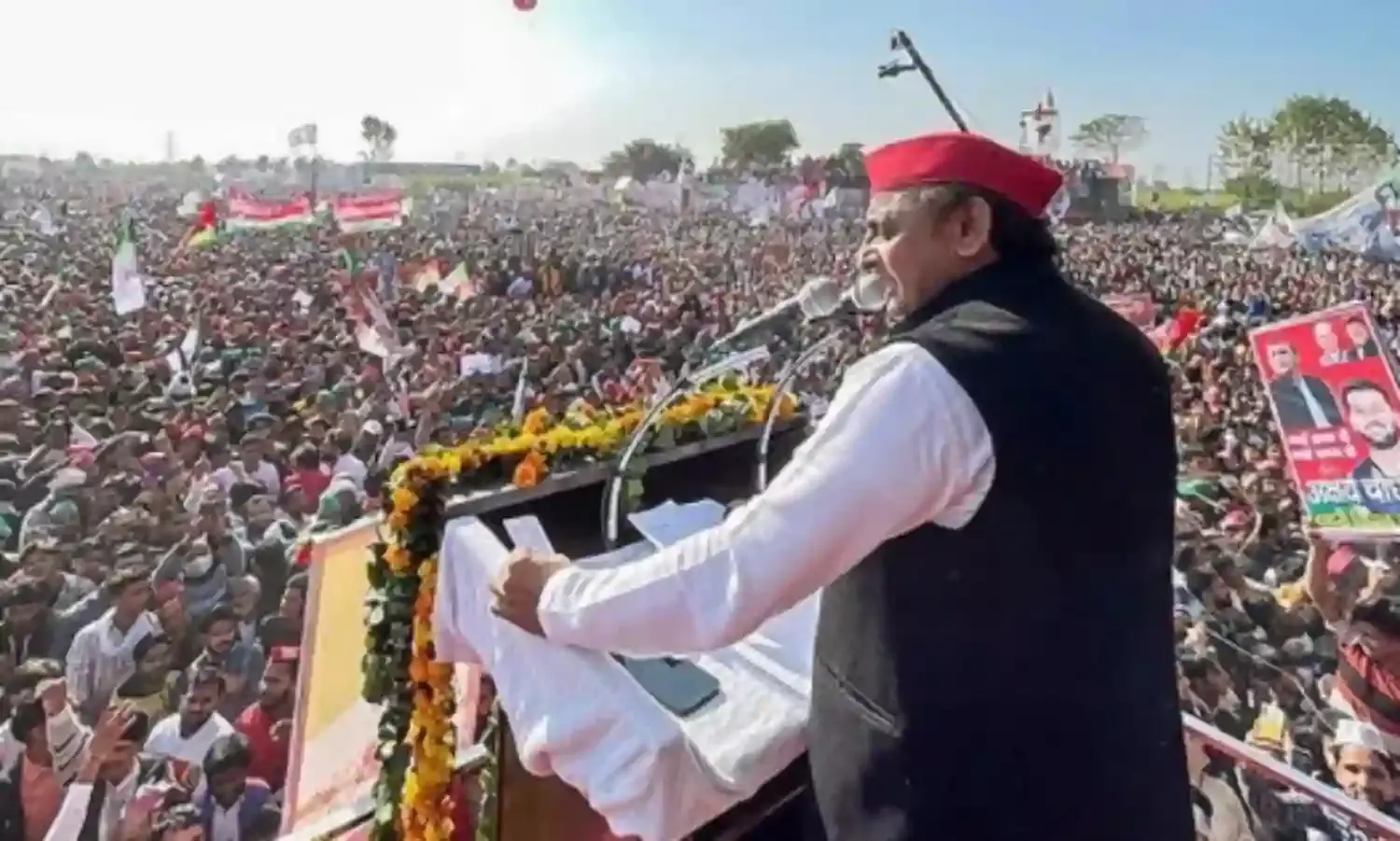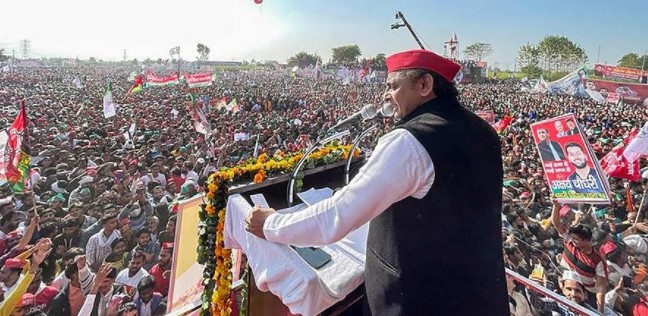Is There a Wave in UP?
For or against

The ballot box reveals its mystery only when the votes are counted. But that does not stop the experts and the voters from analysing the trends, over and over again. And coming up with results that are often closer to the final figures than the exit polls.
There are no two views that the Bharatiya Janata Party can be dislodged from its high position in Uttar Pradesh by a wave. The difference between it and the opposition is such that even if the BJP loses some seats —as many of its more sober elements have no hesitation in admitting —it will still be well in the majority to form a government. Of the 401 Assembly seats in UP, the BJP won 312 (325 as NDA) and its nearest rival the Samajwadi Party secured only 47 in the 2017 polls.
Many are of the view that the spike being seen in the SP-Rashtriya Lok Dal fortunes these 2022 polls is just a bridging of the gap, but not necessarily a win. But what if there is a wave? Yes, the experts nod sagely, then that will be a different story.
Despite the polarisation in predictions between the big television channels and the painstaking journalists representing themselves and their own YouTube efforts, both do agree:
1. There is no wave for the Chief Minister and the Bharatiya Janata Party in UP. BJP leaders are being heckled, are drawing low crowds, and are not generating enthusiasm.
2. SP leader Akhilesh Yadav is drawing huge, and enthusiastic crowds, eclipsing Adityanath. The crowds are responsive, showering him with sentiment and flowers.
3. The politics of polarisation is not paying the expected dividends. The mandir issue seems to have been eclipsed, the Jats have joined hands with the Muslims, every where the voter is questioning divisive politics on the record.
4. The farmers' opposition has had a major impact, particularly in western UP. The release of Minister Teni’s son who had been arrested for mowing down farmers at Lakhimpur Kheri has emerged as a major irritant for voters across.
The differences, however, remain to the extent of the consolidation of votes behind the BJP and its main opposition in the state. And in an effort to keep the BJP ahead, the channels who run propaganda as news, continue to see some division in the Yadav vote, insist that a small percentage of Muslims will vote the BJP, that the backward castes excluding the Yadav prefer the ruling party, and that the Dalits are split between the BJP and Mayawati who remains in a fairly commanding position with the Jatavs in the state. The Opposition, of course, denies a split and in fact claims that the ruling party’s supporters such as the Brahmins are voting now for the SP.
What then constitutes a political wave? When voters cutting across caste and communities vote against or for a particular party. As they did in 2017 for the BJP and its allies that secured them 325 seats. Or for Indira Gandhi after the liberation of Bangladesh, or against her after the Emergency.
In 2017 the BJP got votes from all communities including the Dalits despite the fact that Mayawati was very much in the campaign, and the young Yadavs in particular who moved away from the SP in search of more promising pastures. So apart from its own vote banks the BJP benefited from the support of the peoples at large, as professions and castes moved towards it for a host of reasons ranging from development to Hindu rashtra.
For the SP-RLD to win with a good margin of seats, and overturn the 2017 mandate as it were, a hand to hand combat in constituencies will not pay dividends. Well only in terms of increasing their seats but not dislodging the BJP from power. A wave, no matter how silent, is required to push the BJP out of the game and bring the two young leaders, Akhilesh Yadav and Jayant Chaudhary to power.
For this a consolidation of the SP-RLD basic vote banks of course, is essential. Jats and Muslims with at least some section of the Dalits will upset the apple cart in western UP, but not necessarily bring in victory in the state per se. Yadavs and Muslims with other backwards in parts of UP is also a good combination but can be countered in constituencies by the BJP with upper caste consolidation and the votes of large sections of the Lodh Rajputs and Kurmis from the other backwards who have become fairly loyal supporters of the BJP.
A wave thus is essential for a change in government, given the wide gap between the BJP and the SP in the legislature today. It is generated when the people shift political allegiance in bulk, and no piecemeal.Such as the farmers when they vote against the BJP on issues of livelihood that affect all . Or the youth, for whom joblessness is a major issue and they vote for this regardless of caste aspirations alone. Or the women for whom security is a major issue, and they vote for the political party they feel most reassured by.
In the 2022 elections the farmers were pretty clear from the beginning that as an agrarian community they were fed up with the BJP and would vote for the RLD-SP combine come what may. RLD as it still evolves some sentiment in the hinterland with Jayant Chaudhry now being recognised as the grandson of the kisan leader and former prime minister Charan Singh. Earlier when the farmers had decided to move with the BJP, Charan Singh seemed not to matter but now he is being invoked by the old Jats as they and their youth gravitate towards the gathbandhan. The three farm laws have been the bone of contention, with the smaller farmers particularly aggrieved about the cattle menace created by the BJP government’s ‘cow protection’ scheme with aging and hungry cows attacking the fields and drifting out onto the roads in search of food and succor.
The second community coming out in larger numbers as the voting progresses in UP, is the youth. Joblessness is being voiced now as a major issue, with voters actually raising the issue at public meetings such as that of Union Defence Minister Rajnath Singh where he was heckled for not stopping recruitment in the Army. This seems at this stage to be cutting through caste and religion with the youth visibly despondent. The lathi charge on the students in Allahabad has certainly not helped and as the election moves eastwards, unemployment is emerging as a major issue.
Women in UP tend to vote largely as per the instructions from the menfolk. It is not a community that has moved out on its own in significant numbers, and remains conservative in their approach. The women of UP have had their favourite leaders with perhaps Indira Gandhi being the last leader to have inspired huge support and open affection in her heydays. For the others the women in UP villages reserve a “let us see” approach with a “we will vote where the village votes” addendum.
The Muslims too who indulged in tactical voting have moved en bloc to the SP. The Rajputs are with the state government and the BJP. The Yadavs are consolidated behind the SP. The Brahmins are not very happy with the BJP and say so openly, but are not enamoured of the SP at all. They themselves expect lower and less enthusiastic voting than before, but in favour of the BJP largely. The Dalit votes are split with all parties claiming a share. The OBCs are crucial in this scenario and perhaps the next stage will make the picture clearer insofar as trends within the different castes amongst the other backwards are concerned.
So then to the million dollar question, is there a wave for the SP? Well the only certainty is that there is no wave for the BJP as established by the first phases of the elections. As for the question in itself, waves are silent and usually make themselves felt when the votes are counted. Indicators such as the above send out signals, but waves for any political combination are discovered only in hindsight.




